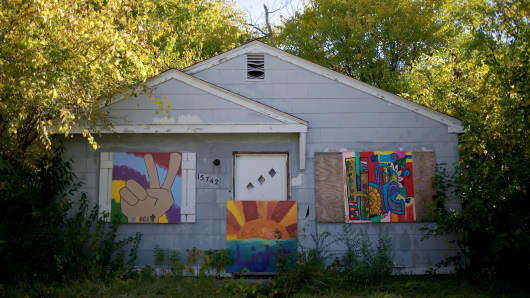To build Detroit's future, first you have to tear down a lot of its past.
That's the essence of a bold plan to revive the nation's 21st largest city after decades of shrinking population, economic decline and a crushing bankruptcy two years ago that forced painful choices on the city leaders, investors, public workers and residents.
With the city no longer facing financial catastrophe, investors have returned and Detroit's downtown is enjoying a boom in new construction, including a series of commercial, retail and residential projects. A new sports complex is the centerpiece of a plan to revamp 45 blocks with new housing, stores, restaurants and public spaces.
But beyond the glass and steel skyline, much of the effort to revive the 140-square-mile city is centered on a massive effort to rehab or demolish tens of thousands of abandoned and dilapidated houses. In just the last two years, more than 10,000 demolitions have cleared the way for a series of neighborhood transformations aimed at redefining urban life in Detroit.
Initially, much of the focus is on simply removing the "blight" that has left some Detroiters stranded in desolate blocks surrounded by abandoned homes. In other sectors, entire streets are devoid of houses, with trees and grasses reclaiming the lots, resembling a rural lane more than an urban thoroughfare.
But today "we've watched the property values in those areas increase significantly as a result of not having the visible blight encroaching on them," said Maurice Cox, Detroit's city planner, hired two years ago to lead the planning effort. "But all of this land is our greatest asset. It has to be repurposed."




